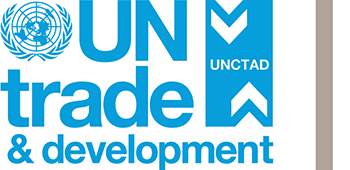The COVID-19 pandemic led to an unprecedented contraction in the global economy that is likely to result in large fiscal deficits and inflated debt positions across countries. Stringent economic lockdown measures that started in China and were implemented in varying degrees in almost all countries of the world slowed down trade and economic activity. This has adversely impacted developing and low-income countries that rely heavily on trade and remittances, like those in central Asia. While the central Asian countries was affected by the virus much later than other neighboring countries, its equally stringent lockdown response, fall in oil prices and the subsequent pressures on their currencies is likely to affect the region more than any other economic shock in recent times. The uncertainty around the virus, the probability of another wave of the disease and delay in accessing vaccine could further extend lockdowns and hamper the economic recovery. However, several countries have launched clinical trials to test vaccines for immunization against this disease. A timely development in this front could increase efforts to re-open countries safely and aid economic recovery. This paper compares the social, and economic policy responses of the countries in the central Asian region with a special focus on Kyrgyzstan. It consists of six sections. The first section analyses Kyrgyzstan’s socio-economic situation and their capacity to respond to the pandemic. The section highlights vulnerabilities in the economy and social structure that is likely to be affected the most due to the country’s stringent lockdown measures. The second section of the reports reviews the revenue and expenditure trends in the country and discusses the fiscal impact in the short and long run. The third section delves into the status of the country with respect to the Sustainable Development Goals and presents a qualitative analysis of how the country’s trajectory in achieving these Goals will be affected due to this shock. The fourth section of this paper enunciates steps taken by Kyrgyzstan to contain the virus, strategies to test and treat patients and the strategies to minimize economic shock. In addition to monetary, financial, macro prudential, and fiscal policies, this sections also discusses the impact on small and medium scale enterprises and the policy responses to support this sector. Each sub-section presents a comparative analysis of Kyrgyzstan’s responses with those adopted in neighboring countries –Armenia, Azerbaijan, Georgia, Kazakhstan, Tajikistan, Turkmenistan, and Uzbekistan. The fourth section discusses the impact of a few policy options on the fiscal position of Kyrgyzstan. The fifth section of the report discusses the fiscal impact of social and economic policies in Kyrgyzstan using the UNESCAP COVID-19 model[1]. Finally, the report concludes with proposed policy responses calling for the country to re-prioritize spending towards health, education, and social spending.
[1] This model provides a country overview, illustrating key factors that are expected to affect the impact of the crisis on the economy, putting this into a regional and global context. These include measures of the spread of the pandemic, the country’s exposure to external shocks, the stringency of measures that have been required to contain the pandemic, the industrial structure of production and trade, social conditions, and the policy backdrop. For details, please refer to https://www.unescap.org/resources/assessing-impact-covid-19-asia-and-pacific-and-designing-policy-responses-excel-based# for the base model. The model used for Kyrgyzstan has been modified to reflect WEO October 2020 numbers and current oil prices and COVID related numbers.
